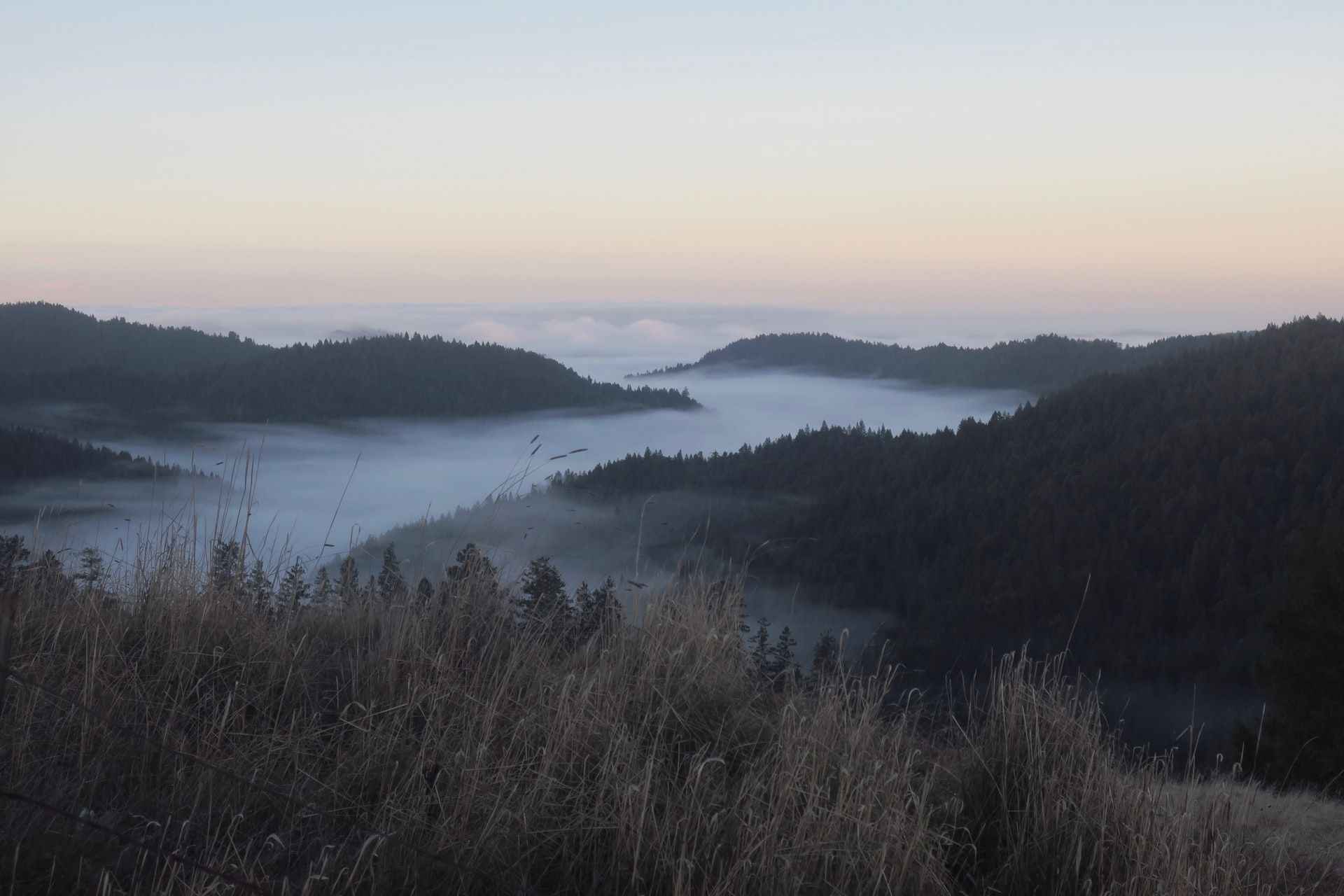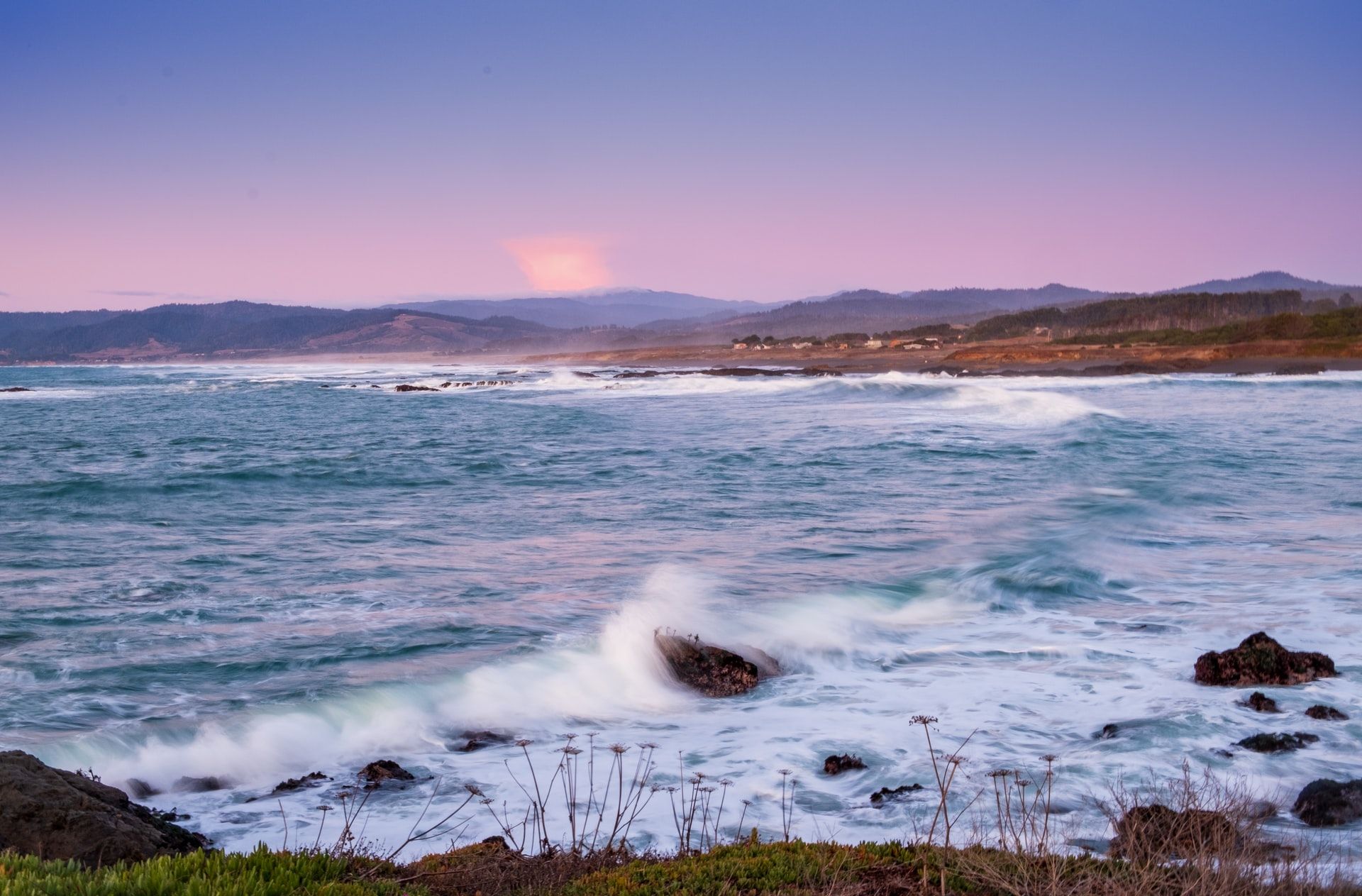Fort Bragg, CA Fishing: Rugged Natural Scenery, Mild Year-Round Weather, and Stunning Fishing on the Pacific Coast
Explore Fort Bragg, CA, and you'll never run out of things to do in this beautiful place.

The City of Fort Bragg is a city along the Pacific Coast of California in the beautiful Mendocino County. Known for its mild year-round weather and unbeatable ocean views, Fort Bragg is a California Historic Landmark. Founded in 1857 as a military garrison prior to the American Civil War, the city thrived as a rail site and port supplying lumber to nearby San Francisco, before eventually becoming the must-see travel destination that it is today.
Historically, Fort Bragg was home to one of the densest Native American populations in the country, before white settlers came in, enslaved them, and eventually displaced them in 1866. By 1906, the city experienced a great deal of damage during the great earthquake and was rebuilt with bricks that were once used as ballast for ships. And by 1916, with the construction of the California Western Railroad completed, Fort Bragg became a popular North California destination both for visitors and settlers.
Today, Fort Bragg is a known tourist destination, but it is not without its share of controversies. Recently, there has been an outcry from residents to change the name of the city, following protests against racial inequality and police brutality swept the country. That’s because the city was named after Confederate Gen. Braxton Bragg, who has been accused of keeping more than 100 slaves.
But apart from this controversy, Fort Bragg deserves a spot on your California road trip itinerary. This rugged territory has plenty to offer travelers who want a front-row seat to the Pacific Ocean and its unspoiled vistas, its world-famous Skunk Train and Glass Beach, and its unbeatable fishing opportunities right on the Noyo Harbor, which is one of the last remaining harbors that still operate on the North Coast.

Fort Bragg Fishing
Fishing has always been an important part of life in Fort Bragg, given its proximity to the Pacific Ocean and all the waters that surround it. Though climate change and other environmental factors have affected the area in many ways, the city remains a great place to fish for beginning and experienced anglers alike.
The best place to start, when fishing in Fort Bragg, is the Noyo Harbor. It is one of the only four harbors in Northern California, and one of the last still operating today. It is on the mouth of the Noyo River, and because of its unique location, it is quite close to the Japanese current and you don’t have to venture too far out to get to deep warm waters. Here you can book a fishing charter or launch your boat to target Chinook salmon, rockfish, lingcod, and albacore tuna. Chinook salmon is the fish species to target in this area. The average size of king salmon here can range from 15 to 35 pounds, though at their peak, you can catch them at over 50 pounds. Trolling for them in large schools in estuaries is the most popular way to catch them here. They will not feed, but they will come at bright lures and flies.
Rockfishing for rockfish and lingcod, on the other hand, is best for newbie anglers who have never fished before but would like to experience the joys and challenges of sport fishing. Rockfish here in Fort Bragg average at 2.5 pounds, but if you’re lucky, you may catch them 14 pounds. Not only are they fun to catch; they also make for great table fare so you’re in for a treat. Rockfish are mostly targeted around rocky reefs, but even if you’re not too far off the shore, you might still catch some blue rockfish and black rockfish which are midwater types that are often not too far from the surface.
Yet another sought-after species here in Fort Bragg is the albacore tuna. It is considered a favorite among anglers for its fight. If you’re targeting this species, be prepared for a fight that may last up to 45 minutes.
Though they are not as frequently caught in Fort Bragg, Pacific halibut are still worth keeping an eye out for, especially if you’re willing to venture farther out over in Shelter Cove, which is 40 miles away from the shore. The halibut in this area are known to weigh an average of 30 to 60 pounds, smaller than the ones caught in Alaska but definitely still worth a fight.
During the colder months, you can target white sturgeon in the waters of Fort Bragg. Their locations greatly vary - from deep holes to shallow flats. They are best caught with live or dead bait kept on the bottom. The best bait to lure them include lamprey eel, ghost shrimp, and salmon roe, but they will take sardines, mackerel, and herring as well.
If you prefer not to go on a boat, pier and jetty fishing on Noyo Harbor are still possible. Head to the pier near the curve of the river, where the water is shallow and brackish. Here you can catch steelhead and starry flounder, as well as rainbow seaperch and redtail surfperch as well as walleye surfperch and silver surfperch.
If you want to experience your fishing in a scenic state park, head over to the MacKerricher State Park. Here you can access the 30-acre Lake Cleon which is located right at the center of the park. This fantastic freshwater fishing lake is home to rainbow trout, brown bullheads, crappie, bluegill, and catfish. While you cannot use motorized boats in the lake, you’re better off fishing from the shore here.
Top 10 Fish Species in Fort Bragg, CA
The top 10 fish species to catch in Fort Bragg, CA are chinook salmon, rockfish, lingcod, albacore tuna, white sturgeon, Pacific halibut, surfperch, steelhead, starry flounder, and rainbow trout.
Seasonal Fishing
Thanks to its proximity to the Pacific Ocean and the warm waters just a few miles offshore, fishing in Fort Bragg can be enjoyed all year round. Do take note though of open fishing seasons and bag and size limits. Rockfish and lingcod are best caught from May to December, while chinook salmon can be caught from April to October, with their peak months mid-June to mid-August. Albacore, on the other hand, can be caught from August to October. Pacific halibut may be caught from May to September, or until the state reaches its yearly quota. Sturgeon are best targeted during the colder months, from November to March.
Explore the Rich Wonders of Fort Bragg
Fort Bragg is a city with a lot to brag about (pun intended), from its scenic natural sights, its unique attractions, and amazing year-round weather, not to mention its cool summers.
1. Book a Fishing Charter
The best way to fish in Fort Bragg is undoubtedly offshore, so if you want to maximize your time in the city, book a fishing charter specializing in many of the area’s prized catch such as salmon, albacore tuna, and rockfish.
2. Visit the Unique Glass Beach
The Glass Beach is a peculiar Fort Bragg destination that was borne out of its former residents’ ignorance about proper waste disposal. In the early 1900s during its boom as a port town, residents simply used the water in the beach as their garbage bin. This practice lasted until the 1960s until the locals decided to finally clean up their act. They removed all the metal and non-biodegradable items but had to leave behind the broken down glass and ceramics there on the shore, resulting in what is now one of the city’s must-see sights.
3. Take a Ride on the Skunk Train
Officially named the California Western Railroad, the Skunk Train has been around since the late 1800s. It is famous for the strong scent it gives off as it runs on gas, and the scenic redwoods route that it takes.
4. Immerse in the Beauty of Mendocino Coast Botanical Gardens
Mendocino Coast Botanical Gardens is not your typical manicured garden. It is known as one of the best in the state, with its amazing collection of plants and flowers and its stunning location. While viewing the dahlias and heritage roses, you will be treated to amazing views of the surrounding canyons and bluffs. You can even walk through forests and wetlands in the garden itself.
5. Get Active on the Fort Bragg Coastal Trail
If you want to sweat it a little while enjoying the nature views of Fort Bragg, hike or bike your way through the famous Fort Bragg Coastal Trail. It is part of the California Coastal Trail, five miles of wide and paved road where you can enjoy a ride while enjoying the views and birdwatching.


